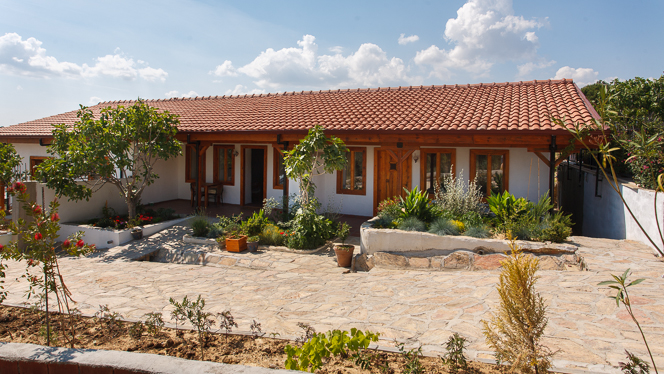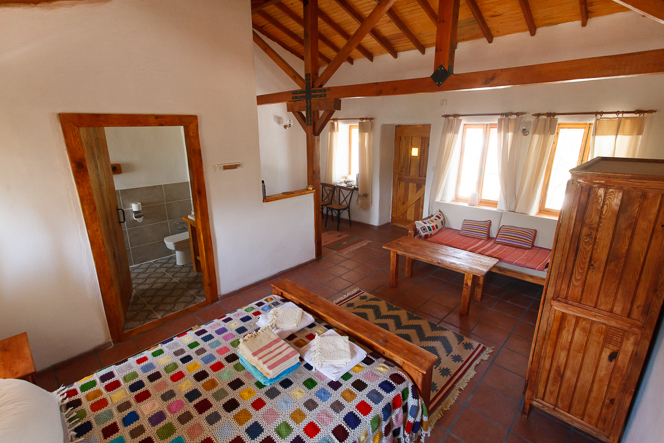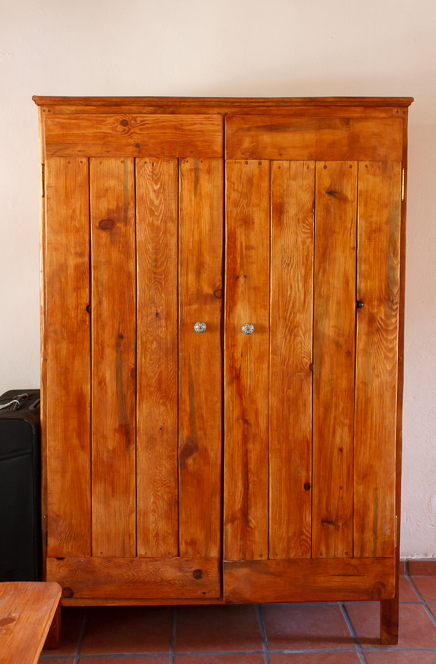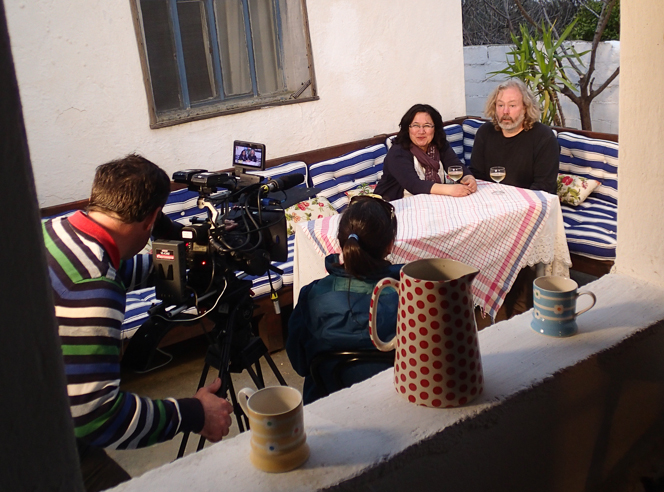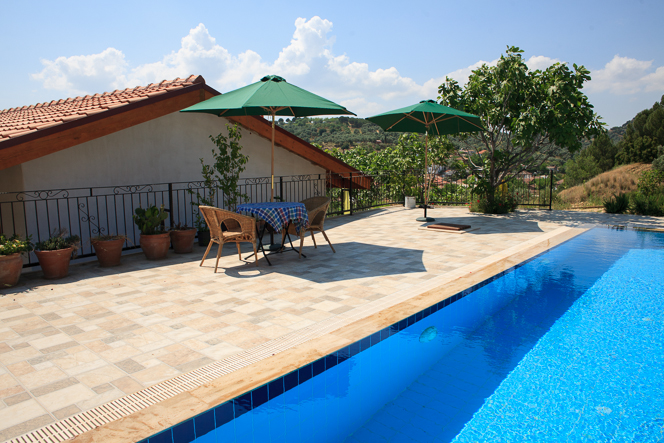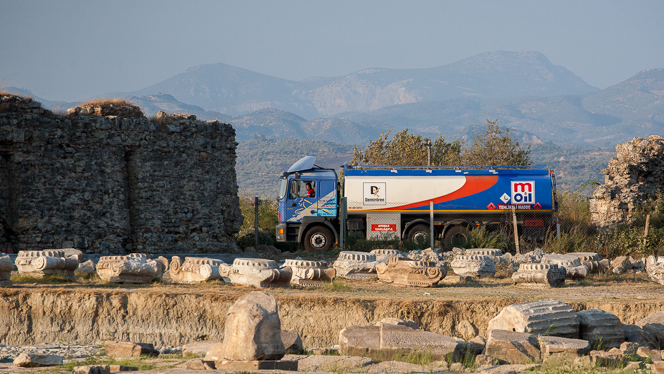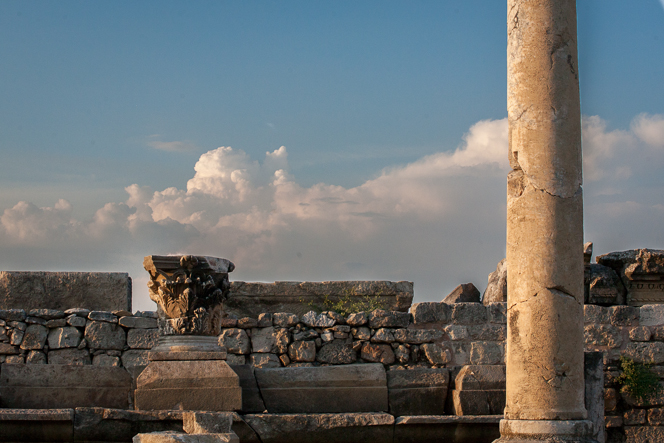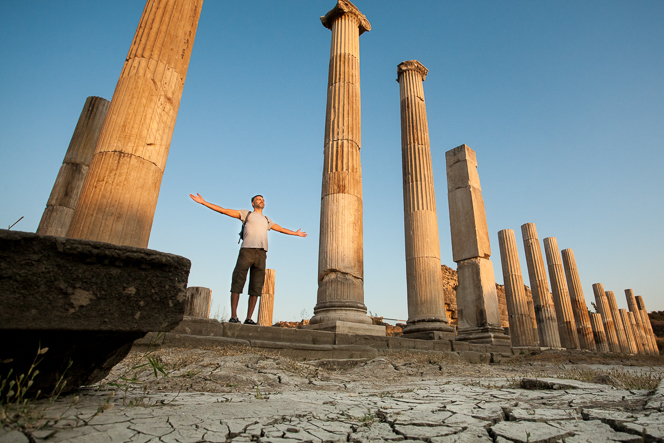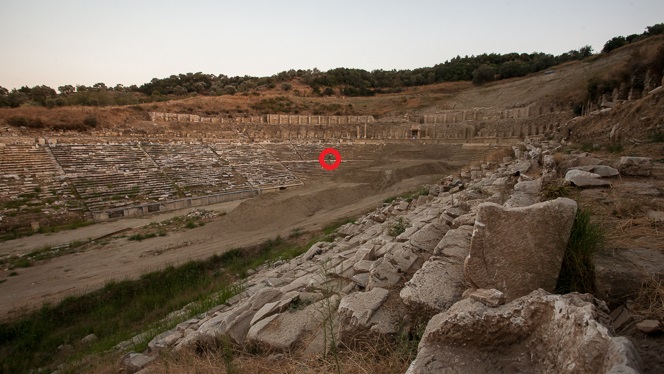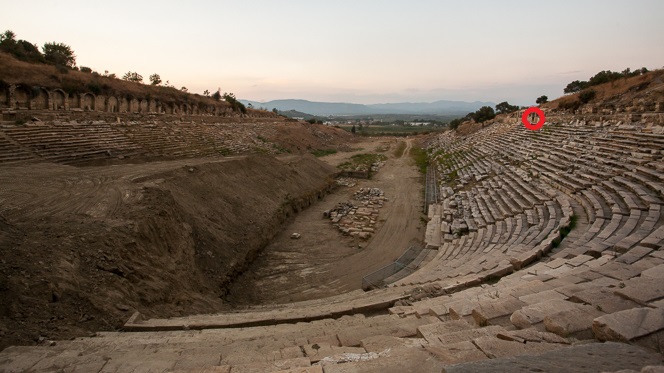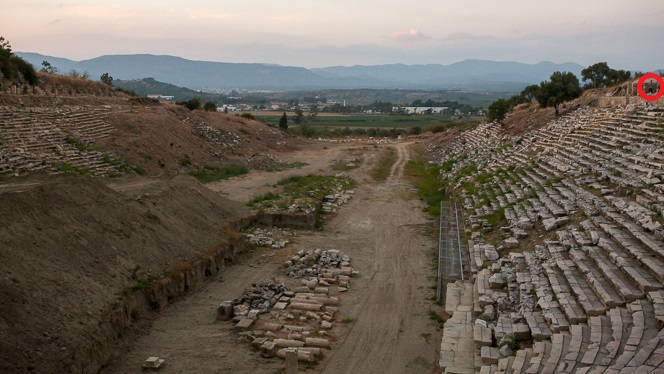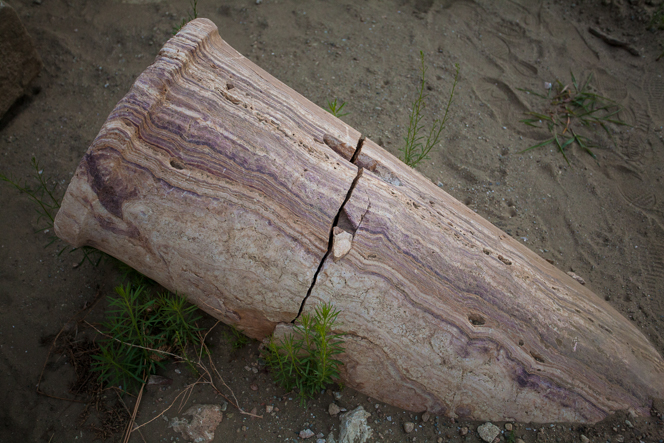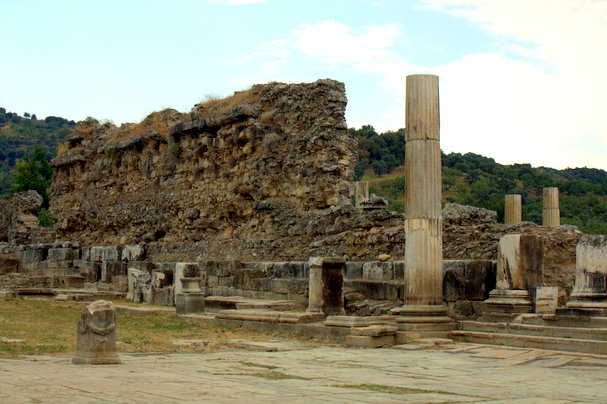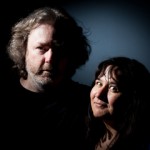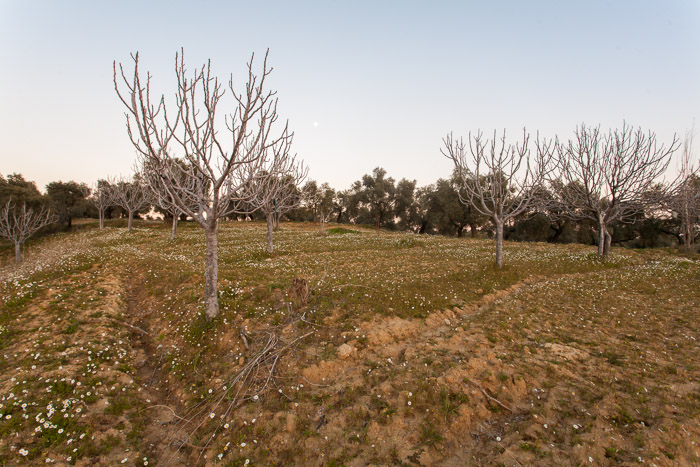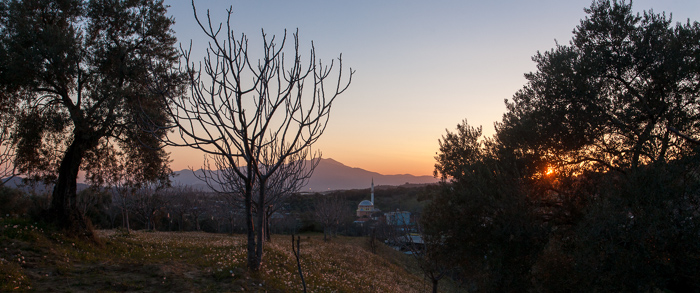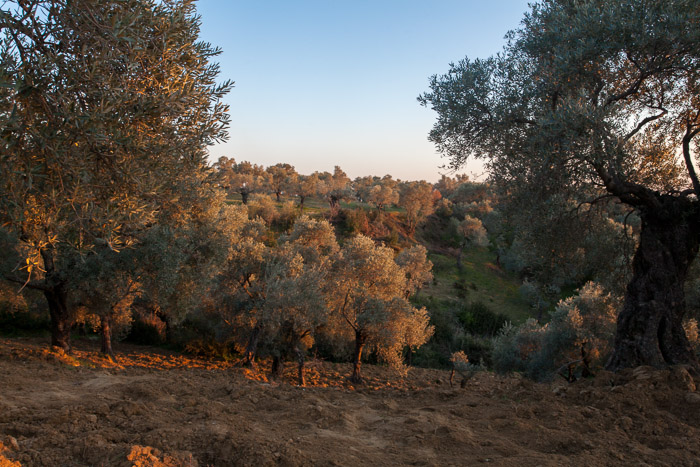More from our backlog of tourism activities…
The ancient city of Ephesus is around 3000 years old and around 30 minutes drive from our place. It’s by far the biggest tourist attraction in this part of Turkey. I read somewhere that it’s the third most visited site in all of Turkey, after Istanbul’s Hagia Sophia and Topkapı Palace. With all those visitors, it does tend to get a little crowded; especially in summer when there are multiple cruise ships per day docking at nearby Kuşadası, disgorging Ephesus-bound passengers by the coach-load. Still, all those people visit for a reason: it’s utterly spectacular. It’s also, I think, one of the best places to get a sense of what everyday life might have been like in the ancient world.
So if you come and visit us, assume that we’re going to devote at least a day to Ephesus.
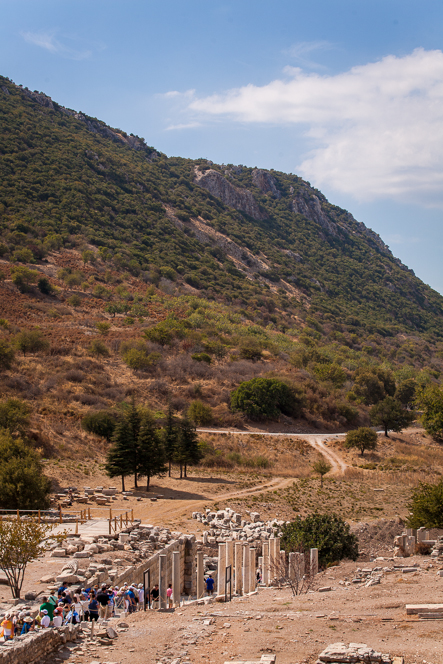
Ephesus is surrounded by dry Mediterranean hills. This hill would once have looked out over the city’s harbour, before it silted up.
It’s a big site, and it can be hot, so it’s important to bring some water. There is, however, no shortage of shops willing to sell you freshly-squeezed pomegranate juice (or pretty much anything else) at either exit.
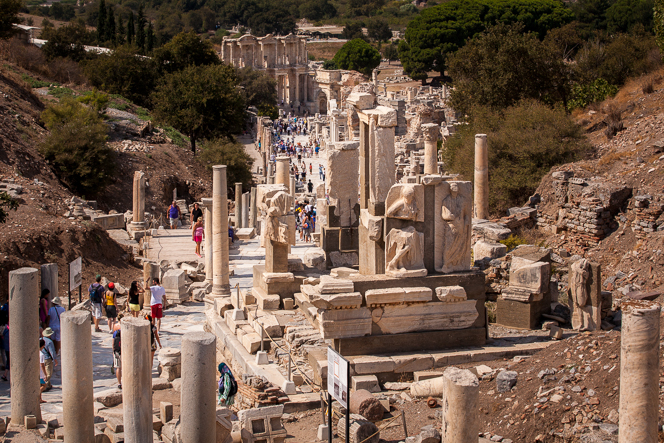
The view down Curetes Street: the ruins of baths, shops, private houses, temples, etc.
Like most of the tourists, we started at the upper entrance and worked our way through town. It’s quite a walk: about two kilometres. In some places you’re looking at tumbled stones with an archaeological sketch suggesting what once was, and in other places there have been painstaking excavations and reconstructions. You get to see both the big, spectacular stuff — the theatre, temples, the famous library, two different agoras — but also smaller things like houses and even the remains of a public bathroom. For me, the smaller-scale buildings made it easier to imagine what life might have been like here. There’s also impressive tile-work and sculpture all over the place.
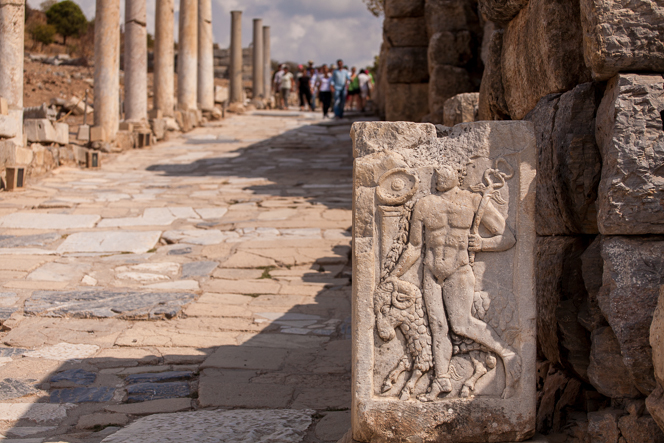
Bas-relief sculpture. That’s definitely a sheep so I am assuming he is a shepherd. [Correction! A sharp-eyed and historically knowledgeable reader has pointed out that the winged sandals and winged staff mean this is the god Hermes. In my defence, he is at least the god of shepherds.]
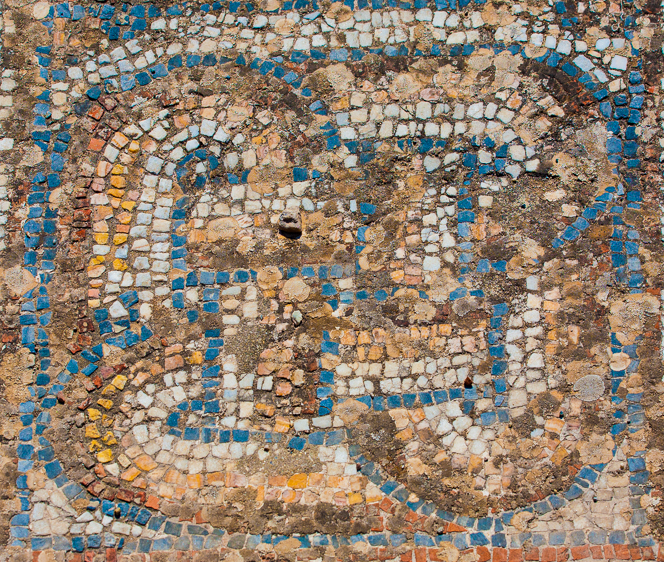
Colourful mosaic tiles. I don’t know for sure, but I think this might have been the porch of someone’s house.
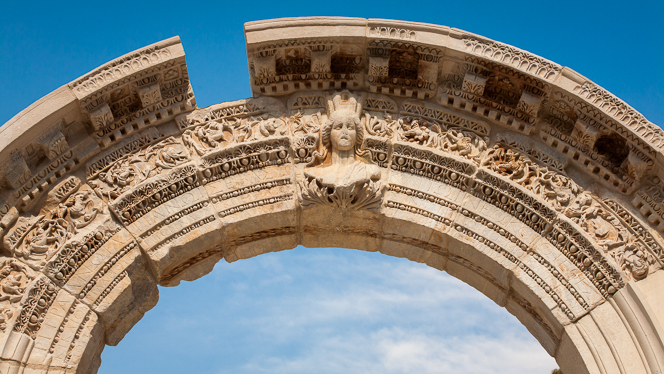
Stone arch: look at the detail!
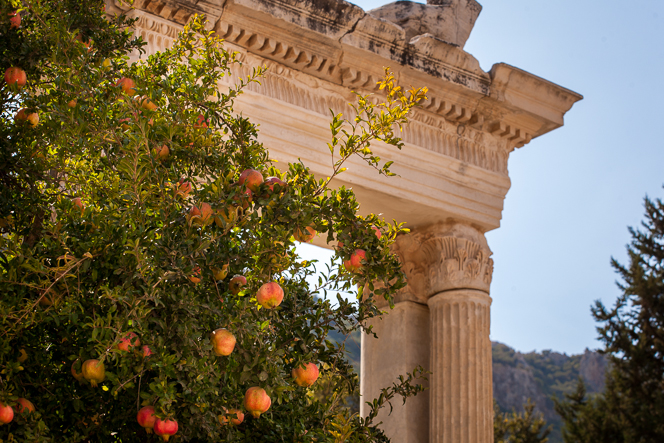
Pomegranate trees among the ruins. I’d like to think the tree is descended from the original Ephesian orchards.
The library of Celsus is Ephesus’s most famous landmark. Being a photographer who embraces cliché, of course I had to get a picture of it.
Ephesus was founded around 1000 BC by the Ionians (Greek colonists) but the library dates from the much later Roman period, around 100 AD. You can imagine that the original building was very imposing.
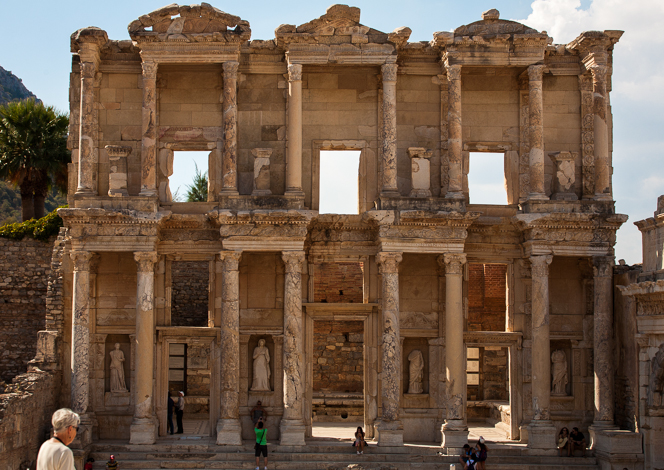
The reconstructed facade of the library of Celsus.
When I first saw the library, on a previous trip to Turkey years ago, I thought that the builders must have done very well given that it was still standing so many centuries later. And in an earthquake zone, too! The truth is more complicated: the library did indeed fall down in an earthquake in 262 AD. Only the facade remained, but that collapsed too in a later quake. The columns and sculptures of the facade are so well preserved because they were buried for many years, before a faithful reconstruction was carried out during the 1960s and 1970s.
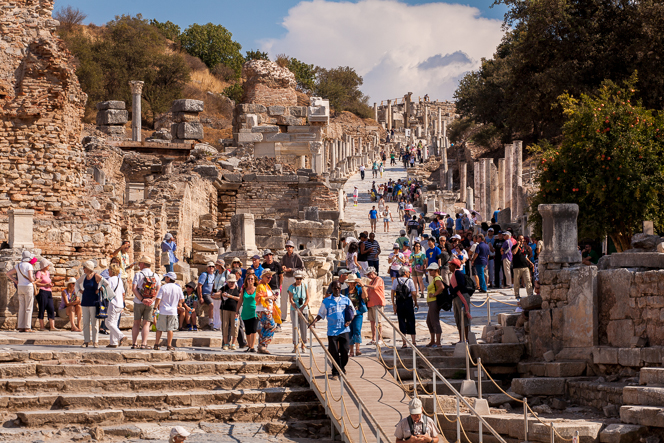
Looking back up Curetes Street. More people than Magnesia, that’s for sure.

The larger of the two agoras, close to the old harbour.
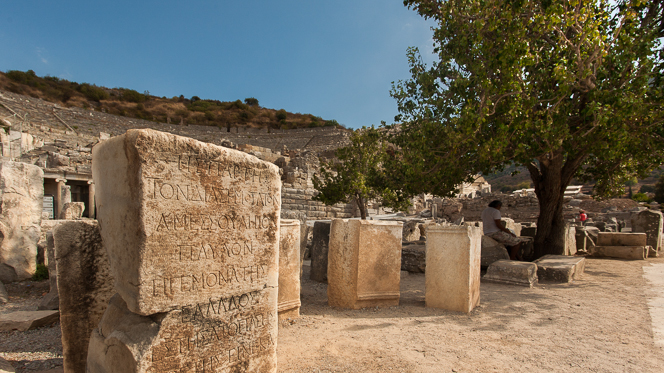
Stone pillar with inscriptions; 25,000 seat theatre in the background.
That was our day at Ephesus. Afterwards we took our visitors for dinner and a swim at Pamucak beach, which is just down the road. (The Küçük Menderes river used to flow into Ephesus’s harbour, but after centuries of silt deposits it now reaches the sea five kilometres away at Pamucak.) History followed by a beer on the beach seems a good day out to me.
